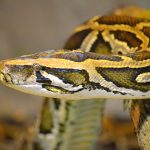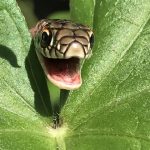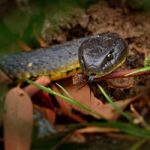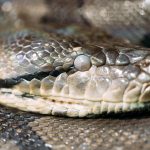Overview of Venomous Snakes: Understanding the Danger
Venomous snakes pose a significant danger to humans and other animals alike. Their venom, injected through specialized fangs, can cause severe pain, tissue damage, and even death. Understanding the danger associated with these reptiles is crucial for our safety and well-being.
One of the key aspects to comprehend about venomous snakes is their diverse range of toxins. Each species possesses its own unique venom composition, which may contain various enzymes and proteins that target specific physiological systems in their prey or potential threats. Some venoms primarily affect the nervous system, while others attack blood cells or disrupt clotting mechanisms. This wide array of toxins underscores the complexity and potency of these serpents’ defensive arsenal.
Another important factor to consider when assessing the danger posed by venomous snakes is their behavior and habitat preferences. While some species are highly aggressive and readily strike at perceived threats, others prefer a more stealthy approach before launching an attack. Additionally, certain snake species reside in close proximity to human settlements or frequented areas such as agricultural fields or water sources, increasing the likelihood of encounters between humans and these potentially dangerous creatures. Understanding these behavioral patterns allows us to better anticipate potential risks and take appropriate precautions.
In light of this information on toxin diversity and behavioral tendencies among venomous snakes, it becomes evident why understanding the danger they present is paramount for our safety. By recognizing different snake species’ habitats, behaviors, warning signs (such as distinctive coloration), we can minimize unnecessary interactions with them – ultimately reducing the risk of envenomation incidents occurring in both urban environments and natural settings alike.
The Deadly Habu: Unveiling the Secrets of a Venomous Snake
The Deadly Habu: Unveiling the Secrets of a Venomous Snake
Native to the islands of Okinawa in Japan, the habu snake is widely regarded as one of the most dangerous and venomous snakes in Asia. With its stout body and potent venom, this formidable predator strikes fear into the hearts of both locals and researchers alike. The habu’s scientific name, Trimeresurus flavoviridis, aptly describes its distinctive greenish-yellow coloration that allows it to blend seamlessly with its natural surroundings.
Measuring up to six feet in length, the habu possesses a set of long fangs capable of delivering a powerful bite. Its venom contains a complex cocktail of toxins that can cause severe tissue damage and disrupt blood clotting mechanisms. Despite its deadly reputation, however, it is important to note that these snakes are typically non-aggressive unless provoked or cornered. They prefer to retreat rather than engage in conflict.
Researchers have been studying the habits and behavior of habus for years in an effort to better understand their secretive nature. One fascinating aspect they have discovered is their ability to adapt to various environments – from dense forests and grasslands to rocky hillsides – making them highly adaptable predators. Their diet consists mainly of small mammals such as rats and mice but can also include birds or other reptiles when opportunities arise.
This enigmatic creature continues to captivate scientists who strive not only for a deeper understanding but also for ways to mitigate potential human-snake encounters. By unraveling its secrets through research efforts focused on habitat preservation and public education programs about snake safety measures, we can coexist with these remarkable creatures while minimizing risks associated with their presence in our midst.
The Stealthy King Cobra: A Lethal Predator of the Asian Jungles
The king cobra, scientifically known as Ophiophagus hannah, is one of the most feared and respected snakes in the world. Found primarily in the dense jungles of Southeast Asia, this venomous serpent can grow up to 18 feet in length, making it the longest venomous snake on Earth. Its sleek body and distinctive hooded head make it easily recognizable among other species.
Equipped with potent neurotoxic venom, the king cobra is a formidable predator that preys upon a variety of animals including rodents, birds, lizards, and even other snakes. With its exceptional eyesight and heat-sensing pits located between its nostrils and eyes, this deadly serpent can accurately strike its prey from a considerable distance. Despite their fearsome reputation as killers, king cobras are generally shy creatures that prefer to avoid human encounters whenever possible.
One unique characteristic of the king cobra is its ability to rear up vertically when threatened or cornered. This behavior not only makes them appear larger but also allows them to strike at vulnerable areas with great speed and accuracy. While their venom can be lethal to humans if left untreated, these majestic creatures rarely attack unless provoked or cornered. It is crucial for anyone venturing into their natural habitat to exercise caution and respect for these magnificent yet potentially dangerous predators lurking within the Asian jungles.
The Ferocious Russell’s Viper: Asia’s Infamous Venomous Serpent
The Russell’s Viper, also known as Daboia russelii, is one of the most feared venomous snakes in Asia. Found predominantly in India and Southeast Asia, this viper is infamous for its aggressive nature and potent venom. Growing up to 5 feet long, it possesses a stout body with distinctive triangular-shaped head and large fangs capable of injecting lethal doses of venom into its prey or potential threats.
This species is well-known for its ferocious behavior when provoked or threatened. The Russell’s Viper exhibits an intimidating display by coiling its body into an S-shape, hissing loudly, and striking repeatedly if necessary. Its bite can cause severe pain, swelling, blistering, tissue damage, internal bleeding, kidney failure, and even death if not treated promptly with antivenom.
Despite their dangerous reputation among humans due to frequent encounters in agricultural areas or near human settlements,the primary diet of the Russell’s Viper consists mainly of small mammals like rats and mice. They are highly adaptable hunters that ambush their prey using a combination of stealthy movements and powerful strikes. Their excellent camouflage allows them to blend seamlessly into their surroundings while patiently awaiting unsuspecting victims.
The Ferocious Russell’s Viper: Asia’s Infamous Venomous Serpent has undoubtedly earned its fearsome reputation through both its aggressive behavior towards perceived threats and the deadly potency of its venom. It serves as a reminder that caution must be exercised when encountering these serpents to avoid any unnecessary conflicts that could potentially lead to harmful consequences for both parties involved.
The Elusive Many-Banded Krait: A Deadly Beauty of the Night
The Many-Banded Krait, also known as the Bungarus multicinctus, is a highly venomous snake that inhabits various parts of Asia. This elusive creature is renowned for its striking appearance and deadly bite. With its glossy black body adorned with vibrant bands of yellow or white, the Many-Banded Krait stands out as a true beauty of the night.
Unlike other venomous snakes that are active during the day, the Many-Banded Krait prefers to hunt under cover of darkness. Its nocturnal nature allows it to stealthily move through its habitat in search of prey. Equipped with potent neurotoxic venom, this snake immobilizes its victims by attacking their nervous system. The krait’s ability to deliver multiple bites in quick succession makes it an even more formidable predator.
Despite being one of the most dangerous snakes in Asia, encounters with humans are relatively rare due to its reclusive behavior and preference for remote areas. However, when provoked or threatened, this beautiful serpent can become aggressive and strike without warning. It is essential for those living in regions where the Many-Banded Krait resides to exercise caution and seek immediate medical attention if bitten by this deadly creature.
The Sinister Malayan Pit Viper: Camouflaged Danger in the Undergrowth
The Sinister Malayan Pit Viper, also known as the Calloselasma rhodostoma, is a venomous snake that poses a significant threat to humans and other animals. This species is native to Southeast Asia and can be found in various habitats such as forests, plantations, and gardens. What makes this viper particularly dangerous is its remarkable ability to blend into its surroundings with its camouflaged scales.
With an average length of about 1 meter (3 feet), the Malayan Pit Viper possesses a stout body covered in intricate patterns of brown or green scales. These colors allow it to seamlessly merge into the undergrowth, making it extremely difficult for prey or potential threats to detect its presence. Additionally, this pit viper has heat-sensing pits located between its nostrils which enable it to accurately locate warm-blooded prey even in complete darkness.
When threatened or provoked, the Malayan Pit Viper will not hesitate to strike with lightning speed and precision. Its venom contains potent toxins that can cause severe pain, tissue damage, and blood clotting disorders if left untreated. Unfortunately, due to their excellent camouflage skills and nocturnal nature, encounters with these vipers often go unnoticed until it’s too late.
Understanding the behavior and characteristics of the Sinister Malayan Pit Viper is crucial for those residing or venturing into areas where they are commonly found. By recognizing their camouflaging abilities and respecting their habitat boundaries from afar, we can minimize human-snake conflicts while appreciating these fascinating but potentially lethal creatures from a safe distance in their natural environment.
The Mysterious Wagler’s Pit Viper: A Venomous Enigma in the Forests
The Mysterious Wagler’s Pit Viper, also known as Tropidolaemus wagleri, is a fascinating and venomous snake that inhabits the dense forests of Southeast Asia. With its vibrant green scales and distinct yellow stripes running along its body, this pit viper possesses a unique beauty that often captivates those who encounter it. However, beneath its mesmerizing appearance lies a potent venom that can cause severe harm to humans.
One of the most intriguing aspects of the Wagler’s Pit Viper is its enigmatic behavior. Unlike many other snakes that actively hunt for prey, this species prefers to wait patiently in ambush for unsuspecting victims to pass by. It strategically positions itself among foliage or branches, using its excellent camouflage to blend seamlessly with its surroundings. When an opportunity arises, it strikes swiftly and accurately at its prey with long fangs capable of injecting venom.
The venom of the Wagler’s Pit Viper contains various toxins that affect different bodily systems. Its bite can lead to symptoms such as intense pain, swelling, tissue damage, and even systemic effects like bleeding disorders or kidney failure if left untreated. Despite these dangers posed by this enigmatic serpent species in the forests of Southeast Asia, researchers continue their efforts to unravel more about its biology and behavior in order to better understand and mitigate potential threats it may pose within these ecosystems.
The Deadly Bamboo Pit Viper: A Master of Ambush in Asian Ecosystems
The Deadly Bamboo Pit Viper, known scientifically as Trimeresurus gramineus, is a highly skilled predator that thrives in the diverse ecosystems of Asia. With its vibrant green coloration and triangular-shaped head, this venomous snake is well adapted for ambush hunting. It primarily inhabits dense bamboo forests, where it patiently waits for unsuspecting prey to pass by.
One of the most striking features of the Deadly Bamboo Pit Viper is its ability to blend seamlessly into its surroundings. Its green scales provide excellent camouflage among the foliage, making it nearly invisible to both potential prey and predators alike. This allows the snake to remain hidden while waiting patiently for an opportunity to strike.
When it comes to hunting techniques, this viper relies on its exceptional patience and lightning-fast strikes. It typically positions itself on low branches or near ground level, coiled up and ready to strike at a moment’s notice. When a suitable target approaches within striking distance, the viper rapidly extends its body forward with remarkable precision and accuracy, sinking its long fangs into the unfortunate victim.
The Deadly Bamboo Pit Viper possesses potent venom that immobilizes small animals almost instantly. Once envenomated by this master of ambushes, prey usually succumbs quickly due to respiratory failure or cardiovascular collapse caused by neurotoxic effects. Despite their dangerous nature when threatened or provoked by humans – which should be avoided at all costs – these vipers play an essential role in maintaining ecological balance within their habitats as top predators in Asian ecosystems.
The Provoking Banded Krait: A Potent Venomous Snake of Asia
The banded krait, a venomous snake found in Asia, is known for its potent and deadly bite. With its distinctive black and white bands along its body, this snake can easily be recognized in the wild. Its venom contains neurotoxins that attack the nervous system of its prey, causing paralysis and ultimately leading to death. The banded krait’s venom is so powerful that it can even cause respiratory failure in humans if left untreated.
Despite its dangerous reputation, the banded krait is not an aggressive snake and will usually only attack when threatened or provoked. It prefers to avoid confrontation by hiding in burrows or under rocks during the day and becoming active at night when hunting for food. This nocturnal behavior makes it difficult to spot these elusive snakes in their natural habitat.
Due to their highly toxic venom, bites from banded kraits are considered medical emergencies that require immediate treatment with antivenom. Unfortunately, due to their camouflage abilities and secretive nature, encounters with these snakes often go unnoticed until it’s too late. Therefore, it is crucial for individuals living or traveling in areas where the banded krait resides to be aware of their presence and take necessary precautions to avoid any potential interactions with this potent venomous snake of Asia.
Are the Most Venomous Snakes in Russia also Found in Asia?
The presence of venomous snakes found in russia is indeed not limited to its territory alone. These species can also be found in various parts of Asia. Their distribution extends beyond national borders, highlighting the widespread existence of these dangerous serpents in both Russia and neighboring Asian regions.
The Menacing Sharp-Nosed Pit Viper: Unraveling the Venomous Threat
The sharp-nosed pit viper, with its menacing appearance and venomous threat, is a creature that demands respect. Found primarily in the dense forests of Southeast Asia, this snake possesses a potent venom that can cause severe pain and tissue damage to its victims. Its long fangs and triangular head are characteristic features that distinguish it from other non-venomous snakes.
One of the most striking aspects of the sharp-nosed pit viper is its ability to blend seamlessly into its surroundings. With colors ranging from shades of green to brown, this snake camouflages itself among leaves and branches, making it difficult for prey or potential threats to spot. This stealthy nature adds an extra layer of danger when encountering these vipers in their natural habitat.
When it comes to hunting, the sharp-nosed pit viper relies on both patience and precision. It waits patiently for unsuspecting prey such as small rodents or birds to come within striking distance before launching a swift attack. Its venom contains powerful enzymes that quickly immobilize the victim, allowing the snake to secure its meal without much resistance. Understanding the behavior and capabilities of this formidable predator is crucial for those who venture into areas where it resides.
What is a sharp-nosed pit viper?
A sharp-nosed pit viper is a venomous snake species found in Southeast Asia. It is known for its distinctively sharp and pointed nose, which gives it its name.
How dangerous is the venom of a sharp-nosed pit viper?
The venom of a sharp-nosed pit viper is highly potent and can be dangerous to humans. It contains a combination of toxins that can cause severe pain, tissue damage, and even death if not treated promptly.
Where are sharp-nosed pit vipers commonly found?
Sharp-nosed pit vipers are commonly found in the forests and jungles of Southeast Asia, including countries like Thailand, Malaysia, Indonesia, and Vietnam.
What are the distinguishing features of a sharp-nosed pit viper?
Apart from their sharp and pointed nose, sharp-nosed pit vipers typically have a stout body, triangular-shaped head, and a patterned coloration that helps them blend into their surroundings.
Are sharp-nosed pit vipers aggressive towards humans?
Sharp-nosed pit vipers are generally not aggressive towards humans unless they feel threatened or cornered. However, it is important to exercise caution and maintain a safe distance if you encounter one in the wild.
How do sharp-nosed pit vipers hunt for prey?
Sharp-nosed pit vipers are ambush predators. They patiently wait for their prey to come within striking distance before quickly striking and injecting venom into their victim.
What should I do if I get bitten by a sharp-nosed pit viper?
If you get bitten by a sharp-nosed pit viper, it is crucial to seek immediate medical attention. Apply a pressure immobilization bandage, if possible, and try to keep calm to slow down the spread of venom.
Can antivenom be used to treat sharp-nosed pit viper bites?
Yes, antivenom is the primary treatment for sharp-nosed pit viper bites. It is administered to neutralize the effects of the venom and prevent further complications.
Are sharp-nosed pit vipers protected or endangered?
The conservation status of sharp-nosed pit vipers varies depending on the specific species. Some may be protected or listed as endangered due to habitat loss and illegal wildlife trade.
How can I avoid encounters with sharp-nosed pit vipers?
To avoid encounters with sharp-nosed pit vipers, it is advisable to stay on designated paths while hiking, wear protective clothing and boots, and be cautious when reaching into crevices or under rocks where they may be hiding.









